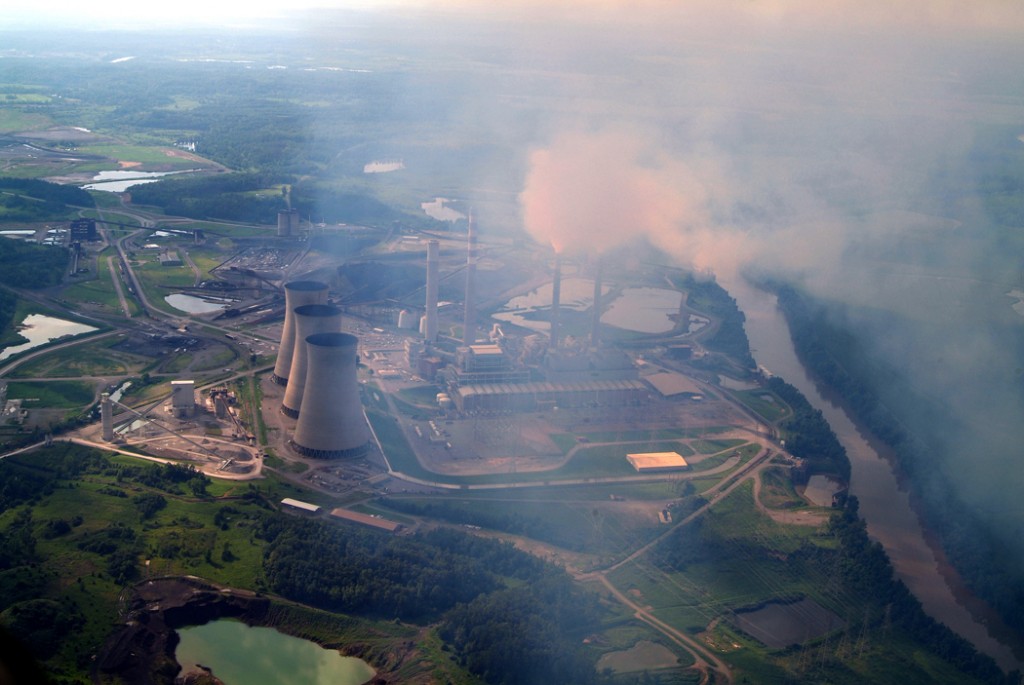
Plants like TVA's Paradise Fossil plant in Muhlenberg County, KY are among the dirtiest in the nation even though they have raised concern with the USEPA for decades. Photo © 2009 John Blair
January 24, 2012-By Amy Westervelt in Forbes Magazine
Make no mistake: Kentucky is a coal state. Legislators have lined up time and again in support of the industry. The state’s governor famously told the EPA last year to “get off our backs” about the environmental impacts of coal.
But a report released this morning indicates that the winds of change may be blowing. The Health Impact Assessment on Coal and Clean Energy Options in Kentucky, prepared by the Kentucky Environmental Foundation collates all the available peer-reviewed reports on the health impacts of both coal production and various types of renewable energy production, in an attempt to encourage legislators who have historically ignored the environmental impact of coal to take a look at the health impacts associated with various energy production decisions.
The use of a Health Impact Assessment (HIA) is somewhat novel–the idea has been taken from Europe and applied with some success in the United States, in so far as it provides a human health-focused version of the environmental impact assessments now required for most major building and development projects. But most of the information contained within this particular assessment has been available to legislators for some time and not swayed them to take a second look at coal and renewables.
What might encourage that shift, however, is the fact that the economic realities of coal for those living in a coal state have shifted. Kentucky currently has one of the most expensive healthcare systems in the country, a fact attributed largely to the state’s polluted air and water. Still, many average Kentuckyians, especially those in the eastern part of the state, where coal has reigned king for decades, have not been swayed by mounting healthcare costs. More important has been the recent spike in utility bills.
Last year was a turning point,” says State Representative Mary Lou Marzian, who recently introduced the Clean Energy Opportunity Act to the state legislature. “Utility bills, even with coal as our main resource, skyrocketed, in eastern Kentucky in particular. Legislators were getting calls from constituents with bills that were three and four times as high.”
The combination of rising utility bills and higher-than-average healthcare has residents starting to think coal may not be king after all. Marzian says she has no expectations that the Clean Energy Opportunity Act will pass this year, but that there is more dialogue now than there has been in the past, and more communication between the coal camp and the environmentalists. “We need to work with the coal folks, and reassure them that looking at renewables can be good for them too,” she says. “Once people know we aren’t interested in putting them out of work tomorrow, they’re more open to looking at new ideas.”
Coal industry spokespeople have long maintained that there are no negative health impacts to coal production, but the evidence is getting increasingly harder to discount, as are the stories of local residents, who are beginning to speak out against the companies.
Anyone who says fly ash is not hazardous has never lived in close proximity to an ash landfill,” says Cathy Little, who lives near the Cane Run coal plant and coal ash site in Louisville. “This landfill is almost full and ash flies off the top of it. It’s on our cars, in our yard, and more importantly in our lungs. That combined with the smoke coming from the stacks creates dirty air, and yet the company is asking to build more. We have no buffer zones between our homes and the plant–our homes are within 50 yards of the ash hill and pond. The ash is everywhere. It’s hard to get it off our furniture–it takes an ammonia-based cleaner to get it off. Just imagine that same ash in your child’s lungs, concentrated with heavy metals. I don’t know what it’s done to my nine-year-old granddaughter in the short term or how it might develop in the long term, but many of the residents around here are suffering from respiratory illnesses, cancer, the list goes on and on.
Stories like Cathy’s are increasingly common in the state, as are studies like the one published in Environmental Research last year that found a 26-percent increase in the risk of birth defects in mountaintop mining communities, after controlling for all socio-economic risks, smoking, level of education and other factors.
These aren’t the first such stories or studies, of course, but with state residents complaining of high energy and healthcare costs, legislators may be more open to coal alternatives than they have been in the past. So far, it remains to be seen how legislators or environmentalists will deal with the economic impact on the coal industry if regulations were to change or the state were to give incentives for renewables and energy efficiency. The Health Impact Assessment asserts that clean energy could create some 700 jobs in the state, but economic data is hard to come by and the industry is likely to use the economy and jobs as its primary tool to defend against those that would like to see the state become a little less coal-friendly.

Thank you Valley Watch. There are times when I feel that we are losing the
debate about clean renewable energy, climate change and a host of other
environmental issues. without groups like yours we have
no chance of increasing public awareness. If I can help in any way do not
hesitate to let me know.